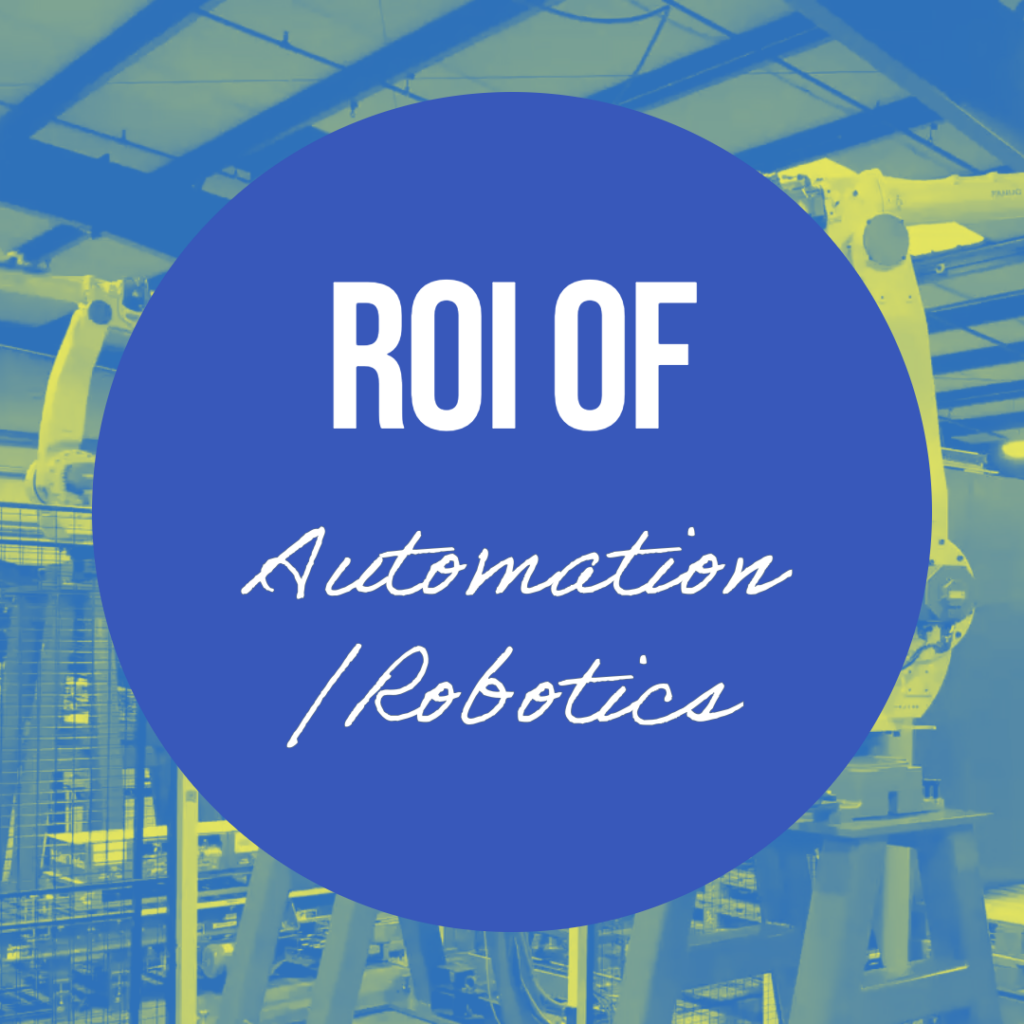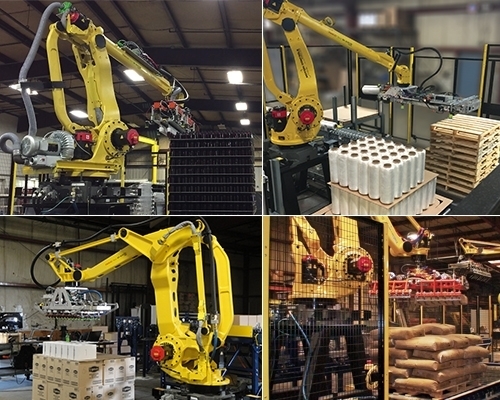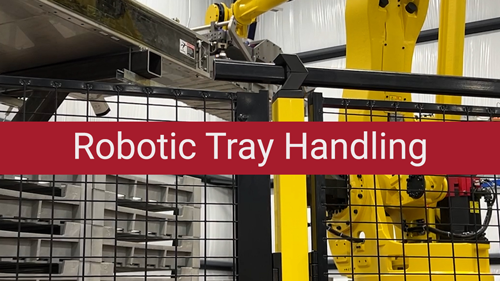This integration project/case study introduces a packaging and centralized palletizing solution specifically designed for the building and construction materials industry. To begin, we focused on streamlining end-of-line operations by developing a system that supports three production lines while efficiently palletizing a variety of products. First, the process involves packing paint cans into erected trays or cases, which are then conveyed to the three-station palletizing area. Moreover, this centralized palletizer demonstrates its versatility by also stacking 3-gallon metal cans and 5-gallon plastic buckets. Finally, with its compact footprint, this flexible system leverages innovation to effectively manage the diverse packaging and palletizing demands of this high-demand facility.
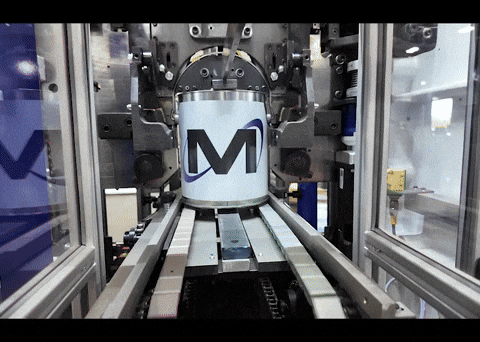
![]()
Customer’s Challenge
The current end-of-line equipment was getting older and causing a lot of downtime and maintenance issues. The company was looking to find a solution that would streamline their operations and keep within the footprint of their current area. They also wanted to find a solution that was more efficient and reliable that could be implemented at their other manufacturing locations.
MCRI’s Solution for Packaging and Palletizing Paint Cans of All Sizes
When designing this solution, we focused on accommodating the packaging and palletizing needs of three production lines simultaneously: a one-gallon line, a 3.5-gallon line, and a 5-gallon line. The system was designed with flexibility as its goal:
- Future Growth: Ensuring the system could scale to meet increased production demands.
- Installation in Other Locations: Designing a solution where the layout could be easily replicated.
- Variety of Products: Supporting a diverse range of paint can sizes and packaging and palletizing requirements.
To meet rate requirements for packing paint cans, we selected the FANUC M-20iD/35. We configured this robot to pick a full case or tray of paint cans in a single cycle, ensuring efficiency and consistency.
End-of-Arm Tooling and Pallet Handling
The end-of-arm tooling (EOAT) was custom-designed to:
- Pick and place products of varying sizes.
- Handle pallets directly from the pallet dispenser.
We engineered the pallet dispenser for flexibility, incorporating features like:
- Compatibility with multiple pallet sizes.
- A compact design that kept pallets stacked neatly within a small footprint.
- Expandability to adapt to new requirements without compromising the overall layout.
This flexibility ensures the system can handle diverse pallet size requirements depending on the delivery destinations of the company’s products.
Palletizing Solution
For the centralized palletizing, we implemented 2 FANUC M-410iC/315, which were optimized to pick rows of products from the infeed conveyor. To ensure efficient throughput:
- Dedicated Cell for 5-Gallon Buckets: A separate robotic cell was created specifically for the 5-gallon line, based on rate requirements.
- Shared Cell for Smaller Products: A second cell handled cases, trays, and 3-gallon cans, maximizing resource utilization, reducing footprint, and allowing for better flexibility.
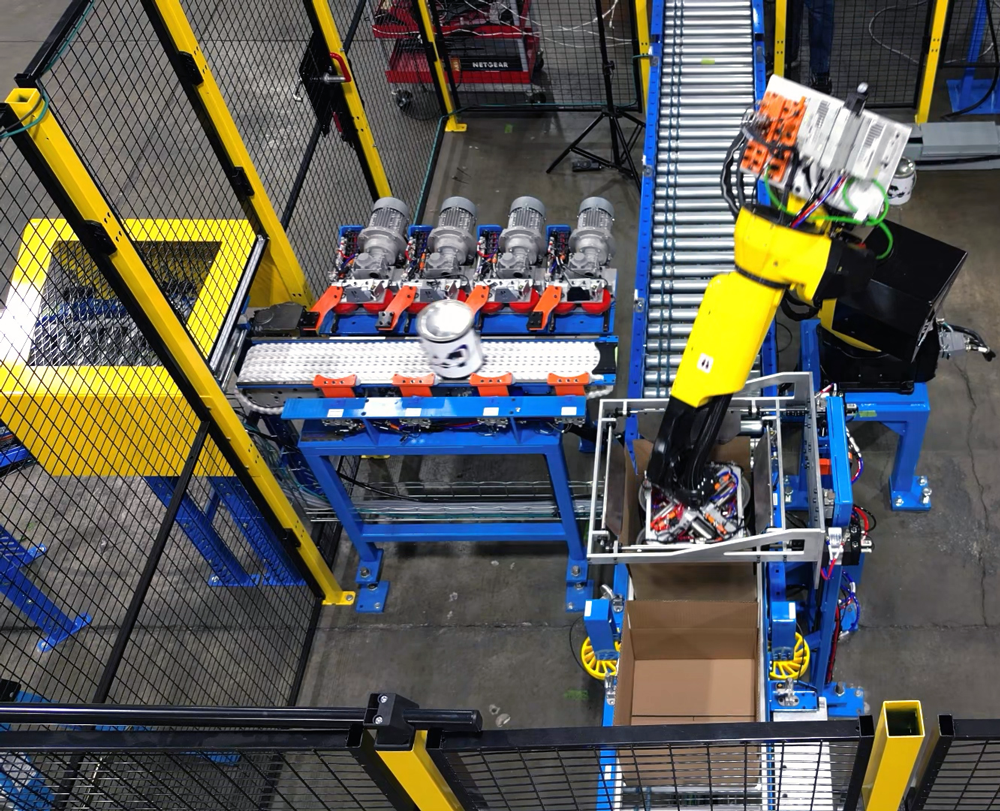
The system is a turnkey, flexible pail tray/case packing and palletizing solution which will completely transform the automation landscape at this facility
Testimonial by: Nate Hinks, Senior Account Manager
Motion Controls Robotics designed this robot system for a company in the building materials industry.
Future Expansion
We designed the system with scalability in mind to support the facility’s future growth. The infeed conveyor system allows seamless integration of additional product cells into the existing setup. Additional product cells can be seamlessly integrated into the existing setup using the infeed conveyor system. This ensures the system remains adaptable to changing production needs.
By focusing on efficiency, versatility, and future project, we delivered a solution designed to the building materials manufacturer’s unique requirements.
Packing and Palletizing Paint Cans – System Videos
Watch our system video to see the robot in action and then go to Sequence of Operations below to read the full explanation.
![]()
Sequence of Operations
Packing and Palletizing Paint Cans and Buckets
- Initial Setup
- To begin, verify that all equipment is ready for automatic operation. Then, use the HMI to configure the system for the production run, ensuring settings are prepared for the next changeover. At this stage, paint pails, trays, and cases are prepared for packaging.
- Infeed Conveyors Work Simultaneously
-
- Next, the system checks filled cans for weight, rejecting any off-spec items to maintain quality. Following this, gallon cans are placed into trays or cases by the packing robot according to the specific order requirements.
- Meanwhile, filled 2.5- and 5-gallon pails or buckets are directed to the palletizing system.
- Simultaneously, trays of gallon cans move toward the palletizing system, and sealed cases are sent to the palletizing area.
- Finally, pails are conveyed to the robot pick position for palletizing, following the operator-selected palletizing pattern.
- Robot Palletizing Cell
-
- Once the infeed processes are complete, the palletizing robot retrieves the required pallet style and positions it appropriately for product stacking.
- The gallon can palletizing robot then stacks trays or cases onto pallets based on the selected recipe.
- At the same time, the pail and bucket palletizing robots place products onto pallets according to the defined pattern.
- Outfeed Conveyors
-
- Finally, the system directs completed pallets out of the palletizing cell and sends them to the pallet wrapper, ensuring the pallets are securely prepared for shipment.This workflow ensures a smooth and efficient process, from setup to final palletizing and wrapping.
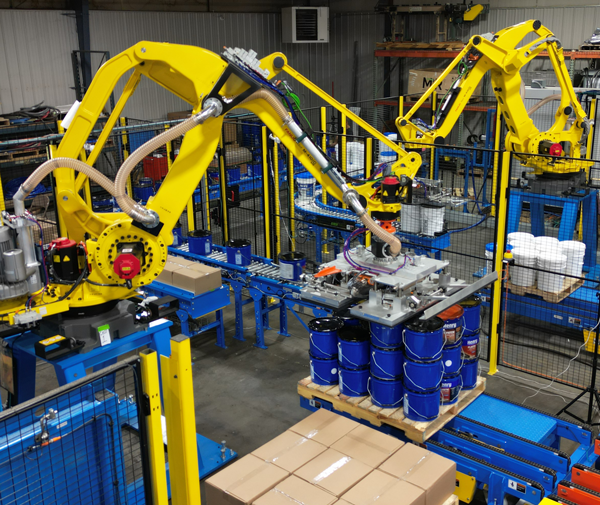

Robot Selection
To optimize performance and meet the system’s requirements, we selected three FANUC robots for this solution:
- Two FANUC M-410iC/315: These robots were chosen for their high payload capacity, ensuring efficient and precise palletizing operations across multiple product lines.
- One FANUC M-20iD/35: This robot was selected for its versatility and speed, making it ideal for the packaging tasks.
You can explore the detailed specifications and download additional information about these FANUC robot models below.
Models |
Payload |
Reach |
Download Spec Sheet |
| Floor Mounted | |||
| M-410iC/315 | 315 kg | 3140 mm | M-410iC-315 |
| M-20iD/35 | 35 kg | 1831 mm | M-20iD-35.pdf |
✓ Safety Features
Motion Controls Robotics follows the ANSI R15.06 Safety Standard designed to ensure employees and robots work safely together. We take full advantage of new safety technologies and innovations as they become available.
Other Safety Features
We design our systems with comprehensive safety measures to ensure a secure operating environment. These include standard features such as safety doors, fencing, sensors, light curtains, and emergency stop (e-stop) buttons. These safeguards are implemented to protect personnel while maintaining efficient and reliable system performance.
Some specific example for this central palletizer are:
- Operator can safely load pallets into the fenceless pallet dispenser through the use of area scanners.
- We designed the robot cell with multiple safety zones for specific areas of operation. This allows the system to continue stacking in unaffected zones while maintaining strict safety protocols in areas being accessed. By isolating active and inactive zones, the system maximizes uptime and ensures operator safety.

Customer Results
In conclusion, the implementation of MCRI’s packaging and centralized palletizing solution delivered significant benefits to the customer. Specifically, the system improves efficiency by simultaneously handling three production lines while maintaining a compact footprint. Additionally, employee safety was enhanced through the use of robotic automation. This kept employees from continuous manual handling of heavy or repetitive tasks.
Moreover, the flexibility of the end-of-arm tooling enabled the customer to palletize a wide variety of products, ranging from gallon cans to 5-gallon pails, effectively meeting diverse order requirements. Furthermore, the design supports future expansion and simplifies installation at other locations, offering a scalable and adaptable solution for the customer’s evolving needs.
Ultimately, the industry’s growing focus on automation to enhance both efficiency and safety is driving the widespread adoption of advanced palletizing areas. If you are interested in exploring this type of automation for your facility, contact us using the button below.

